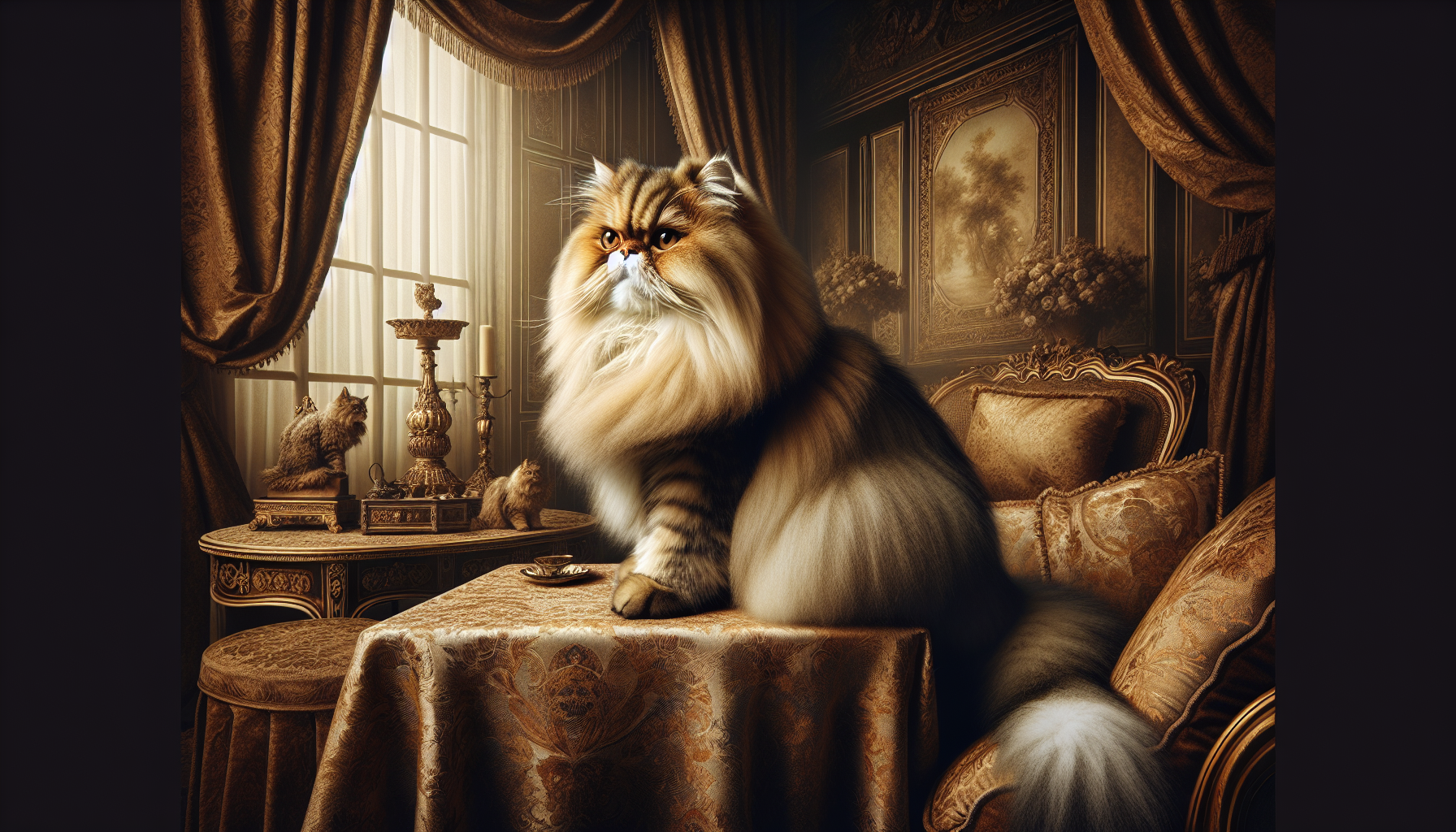Have you ever wondered when the first cat show took place? Well, look no further! In this article, we will explore the fascinating history of cat shows and discover when these beloved feline competitions first emerged. So, sit back, relax, and prepare to embark on a journey through time to uncover the origins of cat shows.
The History of Cat Shows
Cat shows have a rich and fascinating history that can be traced back to their early beginnings. From informal exhibitions of cats in medieval times to the establishment of pedigree cat clubs and the popularization of cat shows, these events have played a significant role in showcasing and celebrating our feline companions.
Early Beginnings
The origins of the concept of cat shows can be traced back to the emergence of what is known as “cat fancy.” This term refers to the passion and interest in owning and breeding cats, which started to gain popularity in the 18th century. As people began to appreciate cats as more than just practical companions for pest control, the desire to showcase their beauty and uniqueness grew.
The First Modern Cat Show
The first modern cat show, as we know it today, took place in London, England in 1871. Known as the Crystal Palace Cat Show, this event was a groundbreaking moment for cat lovers and enthusiasts. Organized by Harrison Weir, a notable cat enthusiast and artist, the show set the stage for future cat exhibitions around the world.
The Role of Harrison Weir
Harrison Weir, often referred to as the “Father of the Cat Fancy,” played a crucial role in the development and popularization of cat shows. Not only did he organize the historic Crystal Palace Cat Show, but he also made significant contributions to the world of cat breeding and exhibition through his writings and involvement in various cat clubs. Weir’s passion for cats and his dedication to promoting their beauty and value as pets fueled the growth of the cat show movement.
Establishment of Pedigree Cat Clubs
Following the success of the Crystal Palace Cat Show, cat enthusiasts came together to form the first official cat club, known as the National Cat Club, in 1887. These pedigree cat clubs were instrumental in recognizing and standardizing specific cat breeds. Through their efforts, breed standards were developed, ensuring that cats being exhibited met certain criteria of appearance and characteristics.
The Popularization of Cat Shows
Cat shows quickly gained popularity, attracting not only cat breeders but also cat enthusiasts and the general public. As the cat show movement expanded, new breeds were introduced, capturing the attention and admiration of attendees. These events showcased the incredible diversity and beauty of cats, enticing more people to become involved in cat breeding and exhibiting.
Evolution of Cat Show Formats
Over time, cat shows have evolved to meet the changing needs and interests of participants and attendees. Several significant developments have shaped the format of today’s cat shows.
Changes in Judging Criteria
Initially, cat shows focused primarily on physical appearance and conformity to breed standards. However, as the understanding and appreciation of cats as individuals grew, judges began to consider other factors, such as temperament and behavior. This shift in judging criteria allowed for a more comprehensive evaluation of a cat’s overall quality and personality.
Inclusion of Household Pets
In recent years, cat shows have made efforts to include not only pedigree cats but also household pets. This inclusivity has opened up the world of cat shows to a broader range of cat owners and enthusiasts. It celebrates the unique qualities and beauty of all cats, regardless of their lineage.
Innovation in Show Displays
Cat show displays have become more inventive and visually stunning over time. Exhibitors and organizers have embraced creative approaches to showcase cats and their distinct features. From elaborate themed displays to interactive exhibits, these new show formats contribute to an engaging and immersive experience for attendees.
Integration of Cat Agility Competitions
One notable addition to cat shows in recent years is the inclusion of cat agility competitions. Inspired by dog agility competitions, these events test a cat’s agility, speed, and dexterity as they navigate a course of hurdles, tunnels, and other obstacles. This exciting addition not only entertains spectators but also highlights the athleticism and intelligence of our feline friends.
Cat Show Culture and Community
Beyond the competitive aspect, cat shows have fostered a vibrant and supportive community of cat lovers, breeders, and exhibitors. Participants in these events have the opportunity to connect with others who share their passion for cats, exchange knowledge and tips, and form lasting friendships.
Competitors and Exhibitors
Cat shows bring together a diverse range of competitors and exhibitors, each eager to showcase their cats’ beauty and unique qualities. These individuals invest time, effort, and resources to prepare their cats for the show ring, ensuring they are in optimal condition physically and mentally. The camaraderie among competitors creates a friendly and supportive atmosphere, where everyone celebrates the love and admiration for cats.
Show Regulations and Etiquette
Cat shows operate under specific regulations and guidelines to ensure fairness and integrity. These regulations cover aspects such as breed standards, show procedures, and ethical considerations. Exhibitors are expected to show respect towards the judges, other exhibitors, and the cats themselves. Through adherence to these regulations and proper etiquette, cat shows maintain a positive and ethical environment.
Socializing and Networking
Cat shows offer a unique opportunity for cat enthusiasts to socialize and network. Attendees can engage in conversations, share experiences and knowledge, and learn from experts in the field. The sense of community that emerges from these interactions creates a supportive network for individuals passionate about cats.
Cat Show Awards and Titles
Cat shows provide recognition and acknowledgment for the hard work and dedication of breeders and exhibitors. Awards and titles are bestowed upon cats based on their performance in the show ring. These accolades not only honor the excellence and beauty of the cats but also serve as a testament to the skill and expertise of their owners.
Cat Shows in the Modern Era
Cat shows continue to thrive and grow in popularity, both within their home countries and globally. The demand for these events has led to the establishment of international cat show organizations, such as The International Cat Association (TICA) and the Cat Fanciers’ Association (CFA), which oversee and regulate cat shows around the world.
Continued Growth and Popularity
As our understanding and appreciation of cats evolve, so does our enthusiasm for cat shows. The accessibility of information, advancements in breeding techniques, and the increasing interest in specific cat breeds contribute to the continued growth of these events. Cat shows provide a platform for cat lovers to come together and celebrate the beauty and diversity of cats.
International Cat Show Organizations
International cat show organizations play a crucial role in spearheading the global cat show movement. With their standardized rules and regulations, these organizations ensure fairness and consistency in judging and show procedures across different countries and regions. They also facilitate the exchange of knowledge and expertise among breeders and exhibitors worldwide.
Specialty Cat Shows
In addition to traditional cat shows, specialty cat shows have gained popularity in recent years. These events focus on specific breeds, allowing enthusiasts of those breeds to come together and celebrate their shared love. Specialty shows provide a platform for breeders and exhibitors to showcase their cats and exchange information specific to their breed of interest.
The Impact of Digital Media
The advent of digital media has significantly impacted the cat show culture. Social media platforms, online forums, and websites dedicated to cat shows have created new avenues for sharing experiences, discussing cat-related topics, and promoting upcoming events. Digital media has also allowed for greater visibility and accessibility to cat shows, reaching a wider audience and sparking interest in new participants.
Conclusion
From their humble beginnings to their current status as highly anticipated and celebrated events, cat shows have played a vital role in promoting the beauty and uniqueness of cats. Through the efforts of passionate individuals like Harrison Weir and the establishment of pedigree cat clubs, the cat show movement continues to flourish and captivate cat lovers from all corners of the world. As we look to the future, cat shows will undoubtedly remain a cherished tradition, bringing together feline enthusiasts to celebrate and honor these captivating creatures.



